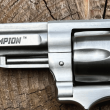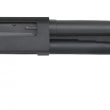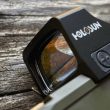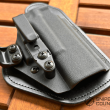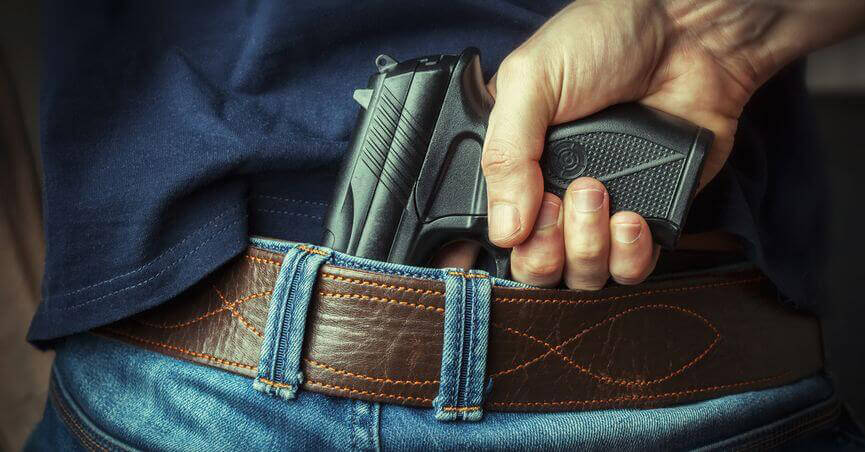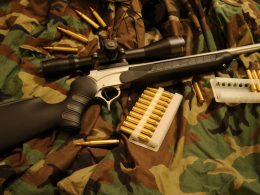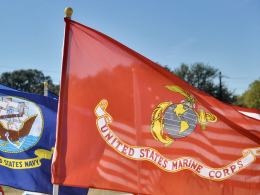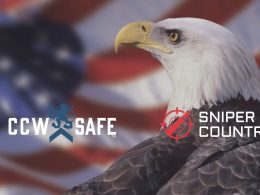Snipers are the most feared rifleman on the battlefield. With an average of around one enemy death per 250,000 rounds fired in the modern Global War on Terror, a sniper who only fires on average around 1.3 rounds per kill stands out as a terribly lethal soldier. The elite training and precision rifles given to the modern sniper only enhance that fearsome reputation as the dealer of carefully selected death from afar.
However, the modern sniper has come a long way from militiamen armed with their personal flintlock rifles picking off men armed with smoothbore muskets. Today, the sniper is supported with exceptional training, exceptional arms, and massive budgets that are designed to ensure that these soldiers can achieve their objective and return home to do it repeatedly. However, while it is easy to look at elite snipers like the late Chris Kyle and see what the sniper is today, it is harder to understand the evolution of the sniper and sniper rifle in history. After all, the idea of dedicated sniper programs is a fairly modern idea. The United States did not maintain a permanent sniper school until after the Vietnam War. Traditionally, snipers were simply exceptional marksmen handed accurized infantry rifles with some sort of optic on top, or even commercial hunting rifles. In fact, until the 1970’s or so, hunting rifles often were more accurate than military sniper rifles, and were regularly pressed into those sorts of roles.
In the present day, there are dedicated sniper rifle systems, which in keeping with a trend, are often based on civilian sporting rifles. After all, why reinvent the wheel when you can just work on making it even more precise? Starting out with Kentucky Rifles in the hands of skilled marksmen, to early telescopic sights on rifles during the Civil War, to the quickly assembled sniper rifles of the early 20th century in the United States, and Germany’s foreshadowing of the future state of sniper doctrine in both World Wars, the sniper and sniper rifle has evolved with time, technology and the needs of the conflict he finds himself in.
We are going to look at some pivotal sniper rifles and important snipers and marksmen from the Revolutionary War forward. History is not always clean and pretty, and when we turn the neutral eye of the historian towards the Second World War, we will see that even genocidal regimes play an important role in the evolution of the sniper. Today, the sniper stands tall as the most elite of all riflemen, so let’s see how he got there.
BONUS OFFER: Get your free shooting range targets to print at home!
Get your free targets to print at home!
Rifles and Riflemen in the Revolutionary War
The steely eyed Revolutionary War rifleman picking off British officers and troops from two to three times the range of a standard smoothbore musket are the stuff of myth, legend and a good bit of fact. At the time of the Revolutionary War, infantry was armed with smoothbore muskets for the simple reason that they were both inexpensive and fast to load. Until the advent of the Minié ball, rifles were hard to reload due to increased buildup of powder fouling, to the point where after a few shots you had to clean your rifle in order to keep shooting. Fine for a few stealthy rangers and marksmen, not so good for front line troops.
The primary rifle used by colonial riflemen is known as the Kentucky or Pennsylvania long rifle or simply long rifle. While there is intense scholarly and philosophical debate as to the finer points of those names, they are pretty much interchangeable, and all are based off Germanic hunting as understood by German gunsmiths who moved to North America and brought their designs with them.
These rifles typically had barrels around 32-48 inches or so, and variable calibers all the way up to about .62. There is strong evidence to suggest .40-.48 caliber was most common, and larger bores were often the result of boring out and rifling corroded barrels. These rifles were typically accurate out to 200-300 yards in skilled hands, which handily outperformed the sub 100-yard accuracy of a military smoothbore.
Some of the most famous riflemen of the Revolutionary War were found among Morgan’s Riflemen. Lead by General Daniel Morgan, these men used long rifles to harass and snipe British troops. Morgan imposed a strict marksmanship test to join his unit. Men were given one chance to hit a 7-inch target at 250 paces with a rifle. If they hit it, they were allowed to join. These men were typical of the semi-mythical colonial rifleman that helped create the enduring legend of the stalwart American rifleman.
Sniping Prior to the Civil War
The tradition of skilled marksmen engaging as snipers or “skirmishers†continued through the early 19th century. However, other than the advent of the percussion cap, and some evolution in rifle design, little changed in terms of tactics or gear. It would take the invention of the conical Minié ball in 1849 to make rifles more common in military use. The conical ball had an expanding base which allowed it to be more easily loaded, even in a fouled bore. Now with the ability to use quick loading rifles, rifled muskets became common in the United States.
By the 1840’s early telescopic sights were being built, and by the time of the Civil War there were several different models of rifle scopes available. Equally important was the rise of breach loading rifles. For the first time ever, snipers could carry a scoped, breech loading, cartridge fired rifle and use it in combat, and warfare was forever changed.
Civil War Sniping
The Civil War may have been the first war where scoped rifles were used in combat. On the Confederate side, the famed British made Whitworth Rifle was the rifle of choice for snipers. Arguably the most accurate rifle of its time, the Whitworth made use of polygon rifling (much like a Glock pistol) and was used with and without scopes by Confederate snipers. On the Union side, the Sharps Rifle was the most popular sniper weapon, and again was used with and without optics. Because these can be considered the first true sniper rifles used in combat, we’ll take a closer look at them after we meet a couple of the men who used them.
Truman “California Joe†Head was perhaps the most colorful Union sniper. Serving under Colonel Hiram Berdan (inventor of the Berdan priming system) in the 1st United States Sharpshooters. California Joe was something of a character and was popularized in the Northern press. Enlisting at 52 years of age, Head had been a successful gold miner in California, and looked the part of a somewhat grizzled long bearded miner. Serving for about a year, Head sought a discharge due to failing eyesight from the use of the telescopic sight on his Sharps rifle. Early scoped rifles had a bad habit of having the scope impact the shooter’s face when fired, so it is possible Head had badly damaged his eye in that fashion.
Perhaps the most famous Confederate sniper didn’t bother with a Whitworth rifle, or even a scope. Instead, Jack Hinson engaged in his one-man war against the Union Army with a custom built .50 caliber Kentucky style rifle. Having lost his two sons to unjustified Union action, Hinson set out to get revenge by taking what was essentially an 1860’s benchrest rifle and sniping at Union troops. At one point, he even caused the commander of a troop transport boat to attempt surrender, believing he was under attack by a large group of Confederate troops.
There were no standard issue sniper rifles during the Civil War. The Confederacy prized the expensive and difficult to acquire Whitworth and issued them to only their best marksmen. It is thought that perhaps 20 or so of them were ever fitted with optics. These .45 caliber rifles used special bullets molded to match the rifling of the bore and could be fired with a harder alloy than simple soft lead, making them effective against targets protected by light cover. The Whitworth shot straighter and further than any other rifle of the era, and Confederate snipers were ordered to only engage “high value†targets such as officers or artillery crewmen. A soldier armed with a Whitworth was simply too important to use against enlisted infantry.
Colonel Berdan’s 1st US Sharpshooters is typical of Union sniper units. While the South was first to recognize the value of independent snipers operating on their own, they did so mostly out of the simple fact they couldn’t field many such troops. The heavily industrialized United States had no such problems and fielded multiple regiments of sharpshooters who could act independently or as a group of trained marksmen delivering withering fire against the enemy.
The Model of 1859 Sharps Rifle fired a .52 caliber conical bullet in a paper cartridge. The cartridge was ignited using a standard percussion cap or a unique paper tape priming system. Many Model 1859’s were equipped with telescopic sights and were widely used by snipers throughout the war. Because it was a falling block breech loader the Sharps was capable of a higher rate of fire than the Whitworth, which when combined with the famous Sharps accuracy, made the Model 1859 a very lethal weapon in the hands of Union snipers.
Sniping in the 20th Century
We next have occasion to look at sniper rifles during WWI. This isn’t to say that there weren’t advances in rifle and scope technology after the Civil War, but that it wasn’t a priority for most nations until the horrors of trench warfare begged for anything to give stalemated armies an edge.
In what would become a repeated theme in the 20th Century, WWI sniper rifles started out with hunting rifles pressed into military service. Lacking sniper rifles, both England and Germany sent out patriotic appeals for hunting rifles equipped with telescopic sights. While Germany issued scoped rifles to skilled shooters, British forces were less careful, and often gave these important rifles to men with little real skill in sniping. Eventually both England and Germany would develop sniper rifles around their service rifles- the Mauser GEW 98, and the Enfield Pattern 1914 rifle. Having both the benefit of a rifle shooting culture, and time to observe, the US may have been unique in entering WWI with dedicated sniper rifles built on the 1903 Springfield already in inventory and ready to use.
Oddly, one of the most famous acts of sniping in the First World War didn’t involve a scoped rifle, but rather an unassuming P-17 in the hands of one then Corporal Alvin York. Near the end of WWI, York succeeded in destroying a German machine gun nest through the kind of accurate rifle fire that a poor Tennessee farm boy would learn hunting to eat. Taking out nine machine gunners through carefully aimed fire, York then had to take on six charging German troops with fixed bayonets. Out of rifle ammo, he took down those six men with his M1911 handgun. Imagine what York could have done with a scoped rifle! Promoted to Sergeant for his heroism and assistance in capturing 132 German prisoners, York received the Medal of Honor, and exemplified the reality of the American marksman/sniper.
After the guns of WWI fell silent, so did most nation’s efforts to develop and maintain a sniper program. However, whispers of WWII were on the wind a few years later, and several countries made sure they’d have sniper rifles on hand for the inevitable conflict.
The United States retained their scoped 1903 Springfields, but didn’t actively promote sniper training. Besides, the Depression, adoption of the M1 Garand, and then mobilization in anticipation of WWII kept the US busy.
The Soviet Union was unique in developing an extensive sniper program between wars. First buying optics from Germany, and then developing their own, the USSR fielded two scoped versions of the Mosin Nagant M91/30, and designed their SVT-40 semi auto rifle to accept the same fixed four power PU scope as the Mosin Nagant sniper rifle. England and Japan both struggled with optics, while US snipers never achieved the same fame as their incredibly lethal Soviet counterparts. In fact, of the top ten snipers of WWII, nine are Soviet, and one is Finnish.
Germany also fielded an effective sniper program, but not as extensive as the USSR’s. The Blitzkrieg doctrine didn’t lend itself well to sniping, but by the time the German Army bogged down on the Eastern Front, the German sniper program finally found some grim business to perform. The sniper battles between German and Soviet forces are legendary.
German sniper Bruno Sutkus is credited with 209 kills. Matthäus Hetzenauer is credited with 345 kills, including an 1100-yard shot, which is extremely impressive, when you consider it was done with a K98K Mauser rifle in 8mm, fitted with a fixed four power scope. Ivan Mikhailovich Sidorenko is credited with about 500 kills, making him the single most lethal Soviet sniper of the war. Lyudmila Pavlichenko was the top female Soviet sniper with 309 kills, and one of many lethal women snipers the USSR trained and turned loose on the Eastern Front.
However, the single greatest sniper in WWII, and in history was Finn Simo Haya. Using a M28/30 Mosin Nagant rifle with iron sights and a Suomi KP-31 machine gun, Haya is credited with a minimum of 505 kills, and possibly well over 700. This just goes to show that a sniper doesn’t have to use a scoped rifle to do their work.
Several famous sniper rifles were fielded during WWII. Along with the aforementioned Mosin Nagant 91/30, SVT-40, and German K98k rifles, the Germans also fielded a scoped K43 semi auto rifle. The United States entered the war with scoped M1903 Springfields, and ended it with scoped M1-C and M1-D Garand semi auto riles. In pretty much all cases, sniper rifles were fitted with various fixed 4 power optics, which today would be laughable on anything but an AR-15 or a modest hunting rifle. However, as we can see, those scopes on what were little more than accurized service rifles did incredible damage in the hands of skilled snipers on all sides of the conflict.
No nation developed unique sniper rifles. Instead, they took standard infantry arms, and fitted the most accurate ones off the production line with optics using various means. In some cases, like the M1-C and D rifles, this involved a gimmicky offset mount to allow the use of en-bloc ammo clips. There is little difference between the two Garand rifles, save for how the scope is mounted. The Russians used a side mounted scope but were able to center it over the bore. Germany used various arrangements, including one that would place the scope forward over the bore, much like a modern scout rifle, or on the receiver of the rifle like most modern scoped bolt action rifles. The SVT 40 had a slide on scope mount that slid into grooves milled into the rear of the rifle’s receiver. After the war, no major development work was done on sniper rifles, and instead countries turned their attention to the new-fangled assault rifles which were becoming popular.
We have a chance to visit serious evolution of the sniper concept again during the Vietnam War. Perhaps no sniper defined and shaped the concept as Marine sniper Carlos Hathcock. Vietnam, like all prior wars was fought with an indifferent array of sniper rifles. WWII vintage 1903 Springfields and M1-C/D Garands appeared alongside commercially sourced sporting rifles like the Remington Model 700 as the USMC M40, and the Winchester Model 70. There was also a sniper version of the M14 known as the M21 Sniper Weapon System. Vietnam showed that the United States was still struggling with the idea of a sniper rifle and had again returned to the age-old practice of sourcing hunting rifles and modifying them for military use. This trend continues to the present day, although in a far more highly reformed fashion which we will discuss later. But off the shelf sporting rifles and dusty old WWII rifles aren’t as interesting as Carlos Hathcock.
Hathcock is credited with 93 confirmed kills. The number of his kills is likely around 300, but kills had to be confirmed by multiple sources, including an officer, which meant many of his kills could not be confirmed. Hathcock is the literal stuff of legends. He successfully killed a highly skilled NVA sniper by shooting through the enemy’s scope, spent four days slowly moving through grass in order to target an NVA general, and used a scoped .50 caliber M2 Browning machine gun to take what was then the longest sniper shot ever made at 2430 meters, or about a mile and a half. Hathcock’s exploits could and have filled books and detailed articles. Even more impressive is the fact he was usually working with weapons that were barely better than anything a deer hunter back in the United States could get, if not actually the same guns. All this would change though.
After Vietnam, various branches of the US military would start developing true sniper rifles that were custom built to specification, rather than simply tweaking existing service or sporting rifles. The basis of many of these guns was and still is the tried and true Remington 700 action.
Modern Sniping
Rifles built around the Remington 700 include the M24 Sniper Weapon System which is chambered in 7.62 NATO, the highly advanced M2010 Enhanced Sniper Rifle, which is chambered in .300 Win Mag, and built on a custom free floating chassis and equipped with a suppressor, The Remington Mk 21 Precision Sniper Rifle, which is similar to the M2010, and comes in various calibers, including 7.62 NATO and .338 Lapua. Semi-automatic rifles have not been neglected, with guns such as the McMillian Tac-50 being popular with US allies in the Global War on Terror, and the M110 Semi-Automatic Sniper System, which is a 7.62 NATO rifle built around an AR-10 styled rifle. We cannot forget the famous Barret M82 .50 BMG rifle, which first put .50 BMG power into the hands of snipers in a package a bit handier than a scoped M2 machine gun.
Today’s sniper rifles are highly modular and are often built from the ground up using sourced precision parts from many sources. Starting with an action, armorers will assemble a gun using the finest barrels, triggers, scopes, stocks and other components. As these parts are sourced from civilian manufacturers and are often off the shelf solutions commonly sold to elite sport shooters and hunters, it is quite easy for a person to build a sniper rifle just like those fielded by the armed forces.
No discussion of modern sniping systems is complete without mentioning the late and great Chris Kyle. His story is well documented and has told many times, most notably by himself, and it is impossible to do justice to his life and work in a short space. It is worth noting that Kyle was beneficiary of decades of intensive research and design in sniper rifles and used many different rifles in his missions. He is on record favoring .300 Win Mag rifles, which were built on Remington 700 actions.
The Global War on Terror has also brought a new record sniper kill, this time using a McMillan Tac-50 rifle. Just as Carlos Hathcock made his record setting shot with a .50 BMG, so did an unnamed Canadian sniper. A member of Canada’s Joint Task Force 2 used his rifle to take out a terrorist at a whopping 3,871 yards. A shot so long he had to account for the curvature of the earth when taking aim.
Conclusion
It is impossible to do more than a cursory examination of snipers, sniping and sniper rifles in a simple article. Things have changed a lot from the days of Kentucky rifles, but certain things have not. The skill, dedication, and training required to be a skilled sniper have not changed. Most anyone can master the basic functions of a rifle in a few hours training. Few can ever achieve the skill to be among those most elite of riflemen. Today, snipers rule the modern battlefield, and can shape a battle with a few well-placed shots, take out a high value target and slip off, or do any of the other countless tasks that call for a well-placed single shot time and time again. Their weapons have always been the best of their kind and have always pushed the limits of rifle technology. We see that a close partnership between the civilian gun world and the military have always led to new advances in technology. This is fitting, because the best snipers come from a shooting culture and are already familiar with rifle shooting. So why shouldn’t their weapons also be familiar?
The sniper is a hero and a villain depending on which side of the scope you are on, but he is always a warrior.

